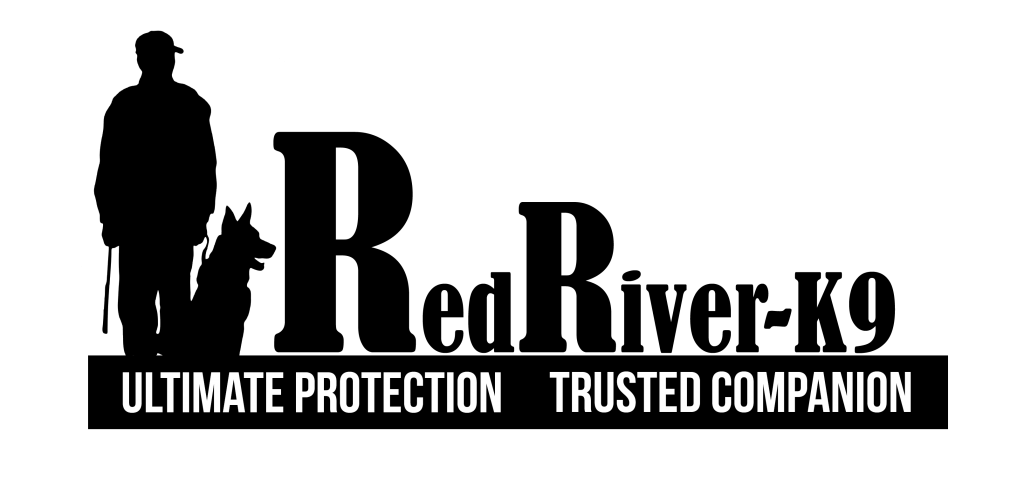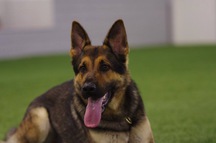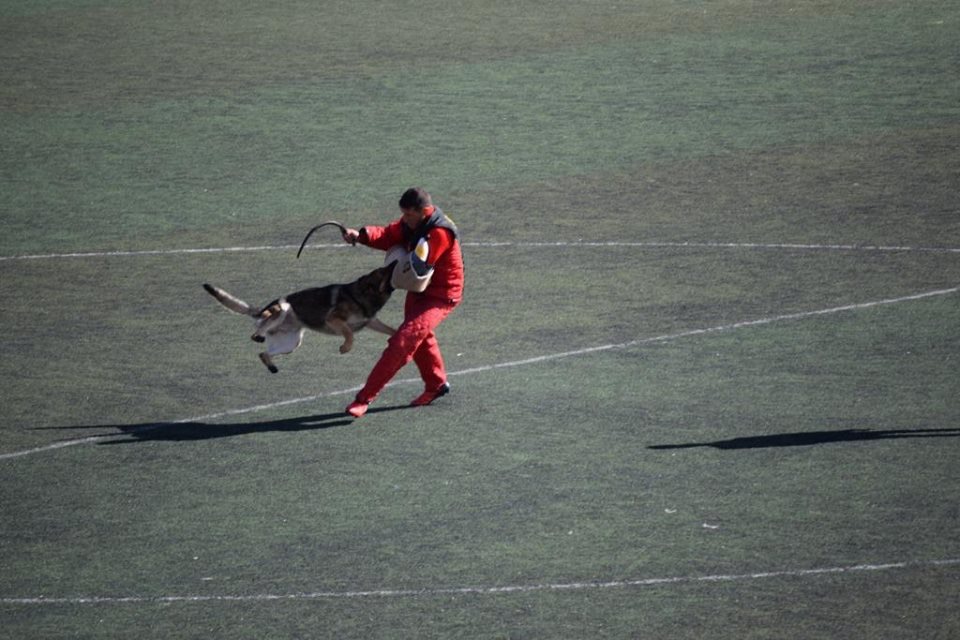
What is Schutzhund?
Schutzhund: German word meaning “protection dog”. It refers to a sport that focuses on developing and evaluating those traits in dogs that make them more useful and happier companions to their owners. Schutzhund work concentrates on three parts. Many are familiar with the obedience work of the American Kennel Club’s affiliates and will recognize the first two parts, tracking, and obedience. The Schutzhund standards for the third part, protection work, are similar to those for dogs in police work.
While dogs of other breeds are also actively involved in the sport of Schutzhund and often follow similar criteria for breeding purposes, this breed evaluation test was developed specifically for the German Shepherd Dog. Schutzhund is intended to demonstrate the dog’s intelligence and utility. As a working trial, Schutzhund measures the dog’s mental stability, endurance, structural efficiencies, and ability to scent, willingness to work, courage, and trainability.
This working dog sport offers an opportunity for dog owners to train their dog and compete with each other for recognition of both the handler’s ability to train and the dog’s ability to perform as required.
Schutzhund Titles
There are three levels of the Schutzhund test for which titles can be earned. Before receiving a Schutzhund title the handler/dog must pass a BH.
The BH, is a degree for traffic-safe companion dogs that test the dog’s temperaments in and around people. It includes basic formal obedience- heeling on and off leash, sites, downs and recalls- as well as practical tests of the dog’s character in everyday situations. These include reaction to normal situations involving crowds of people, strange noises, joggers, cars and other dogs. Before being allowed to enter for a SchH title, the dog must first have successfully completed the BH.
For Schutzhund I, the dog must be at least 18 months old and pass an initial temperament test by the judge. See BH requirements. The dog must heel off leash; demonstrate the walking sit, the walking down, as well as the send out. The dog must retrieve a dumbbell on the flat, over a hurdle and an A-frame. In track, it must be able to follow a track laid by its handler at least 20 minutes earlier. There are also protection tests such as hold and bark, escape, defense against helper and test of courage. Obedience and protection exercises are demonstrated off leash.
For Schutzhund II, the dog must be at least 19 months old and already eared its SchH I degree. There is an additional stand while walking exercise. In track, the SchH II candidate must be able to follow a track laid by a stranger at least 30 minutes earlier. There are also protection tests such as the hold and bark, escape, defense against helper, back transport and test of courage. Obedience and protection exercises are demonstrated off leash.
For Schutzhund III, the master’s degree, the dog must be at least 20 months old and have earned both the SchH I and SchH II titles. Again, the tests are now more difficult. There is the addition of running the stand. In track, the dog must follow a track that was laid by a stranger at least 60 minutes earlier. The track has four turns, compared with two turns for SchH I and II and there are three objects, rather than two, that must be indicated by the dog. There are also protection tests such as the hold and bark, escape, defense against helper, back transport and test of courage and defense against Helper. The picture of obedience, strength, eagerness, and confidence is presented by an excellent SchH III team is a beautiful illustration of the partnership between human and dog.
What are the Components of Training and Trialing?
The public often has a misconception about what this type of training is. They often see photos of dogs doing bite work and see an aggressive and potentially dangerous animal. What they don’t know is how well controlled these dogs must be. As opposed to some police dogs and personal protection dogs that don’t require as much provocation Schutzhund dogs are required to be tightly trained and as a general rule are quite safe in the public. Most people are actually astonished when they meet one. They also frequently don’t realize that training is comprised of three areas with protection work only being one of those areas.
The 3 Parts of a Schutzhund Trial
The tracking phase includes a temperament test by the overseeing judge to assure the dog’s mental soundness. When approached closely on a loose leash, the dog should not act shyly or aggressively. The track is laid earlier by a person walking normally on a natural surface such as dirt or grass. The track includes a number of turns and a number of small, man-made objects left by this person on the track itself. The handler follows the dog and the end of a 10-meter leash. The dog is expected to follow the track and indicate the objects, usually by lying down with it between its front paws.
The obedience phase includes a series of healing exercises, some of which are closely in and around a group of people. During the healing, there is a gunshot test to assure that the dog goes not openly react to such sharp noises. There is also a series of field exercises in which the dog is commanded to sit, lie down and stand while the handler continues to move. From these various positions, the dog is recalled to the handler. With dumbbells of various weights, the dog is required to retrieve on a flat surface, over a one-meter hurdle, and over a six-foot A-frame. The dog is also asked to run in a straight direction from its handler on command and lie down on command. Finally, each dog is expected to stay lying-down position away from its handler at the other end of the obedience field, while another dog completes the above exercises.
All of the obedience exercises are tests if the dog’s temperament, structural efficiencies and very importantly, its willingness to serve its handler.
The protection phase tests the dog’s courage, physical strength and agility. The handler’s control of the dog is absolutely essential. The exercises include a search of hiding places, finding a hidden person (acting as a human decoy), and guarding the decoy while the handler approaches. The dog is expected to pursue the decoy when an escape is attempted and to hold the grip firmly. The decoy is searched and transported to the judge with the handler and dog walking behind and later at the decoy’s right side. When the decoy attempts to attack the handler, the dog is expected to stop the attack with a firm grip and no hesitation. The final test of courage occurs when the decoy is asked to come out of hiding place by the judge from the opposite end of the trial field. The decoy then runs directly at the dog, threatening the dog with a stick. All bites during the protection phase are expected to be firmly placed on the padded sleeve and stopped on command and/or when the decoy discontinues the simulated fight. The protection tests are intended to assure that the dog is neither a coward nor a criminal menace.
It is important to note that temperament is a very important aspect in all levels. There are multiple things that are integrated into the testing for evaluating temperament. If a dog cannot pass these elements (by showing fear, nervousness, extreme aggression, sound reactivity, weaker nerves, etc) he/ she will not be able to pass a test.
What are the Levels of Titling?
There are multiple levels of titles that represent progressively harder levels of work. For each title, there are 300 points available (100 points in each of the three components of obedience, tracking and protection work.) In order to title, a dog must successfully acquire at least 70 points (70%) in tracking and obedience and at least 80 points (80%) in protection. Of course the goal is to score as highly one can.
· SchH 1/ VPG 1/ IPO 1: Beginning level of Schutzhund (obedience, tracking and protection)
· SchH 2/ VPG 2/ IPO 2: Intermediate level of Schutzhund (obedience, tracking and protection)
· SchH 3/ VPG 3/ IPO 3: Advanced level of Schutzhund (obedience, tracking and protection)
Other titles that may be obtained:
· FH: Advanced tracking work
· BH: This is a first level for everything else. It is to test obedience and traffic sureness.
· WH: This is a watchdog test for alertness.
· AD: This is an endurance test to test a dog’s physical ability and stamina.
· SchH A: This is only obedience and protection work.
Dogs should be 15 months old for BH testing, 16 months old for FH and AD testing, 18 months old for SchH A and SchH 1, 19 months for SchH 2 and lastly, 20 months old for SchH 3.
The Schutzhund Trained Dog in the Home…
Since Schutzhund is the demonstration of the German shepherd dog’s most desirable characteristics, dogs well trained in Schutzhund are usually excellent companions in the home. The German shepherd dog- like any other working dog that possesses mental stability has trust and confidence in itself, allowing it to be at peace with its surroundings.
In addition to sound structural efficiencies for long, arduous work, the standard for the German shepherd dog calls for mental stability and willingness to work. The dog should be approachable, quietly standing its ground, showing confidence and a willingness to meet overtures without itself necessarily making them. It should be generally calm, but eager and alert when the situation warrants. It should be fearless, but also good with children.
The German shepherd dog should not be timid or react nervously to unusual sounds or sights. A dog that is overly aggressive because of its overall fear if people and events can be extremely dangerous. The Schutzhund sport is designed to identify and eliminate such dogs from breeding stock. Because Schutzhund training gives the owner a great deal of control over the dog, the owner is able to let the dog have more fun. Not only is Schutzhund training itself enjoyable for the dog, but the Schutzhund trained dog knows how to please its owners, creating a stronger bond between dog and owner.
Choosing a puppy for Schutzhund…
In every breed, the pedigree is the key to knowing the potential of the puppy. Schutzhund revolves around working lines- generations of dogs that have proven themselves and produced similar characteristics in their offspring. These characteristics include not only the physical structure of the dog, which is very important, but also its temperament.
Selecting the bloodlines from which you want your puppy may require advice. Information from breed surveys (which sums up the all-round qualities of a dog in work and show) can help. Of course, it makes sense to discuss your objectives with reputable and experienced Schutzhund handlers or enthusiasts.
Once you have determined that the bloodlines of the potential dam and sire are of high quality, you should observe the parents, especially the mother, if that is at all possible. The puppy should be adventurous and active, playing with objects in the enclosure.
Raising a puppy for Schutzhund work…
Puppyhood is the most critical period for development of the characteristics you want to encourage. Your local Schutzhund club can advise you about nurturing and socializing your growing puppy.
A puppy learns from its experiences, so you want to provide only positive ones. It should be provided with opportunity to explore and investigate new situations and new people, but always in a non-threatening way. Remember that your goal is to build confidence in the young animal. You aim is not to dominate or oppress the young pup.
Schutzhund Age Requirements
BH…………………………………..15 months
AD…………………………………..16 months
SchH A/1/TR1/OB1……………….18 months
SchH 2/TR2/OB2………………….19 months
SchH 3/TR3/OB3………………….20 months
FH 1…………………………………18 months
FH 2…………………………………20 months
(Information from the United Schutzhund Club of America and Aloha Schutzhund Club)


Testimonials
Location
Contact
- (615) 849-6542
- info@redriverk9.com
